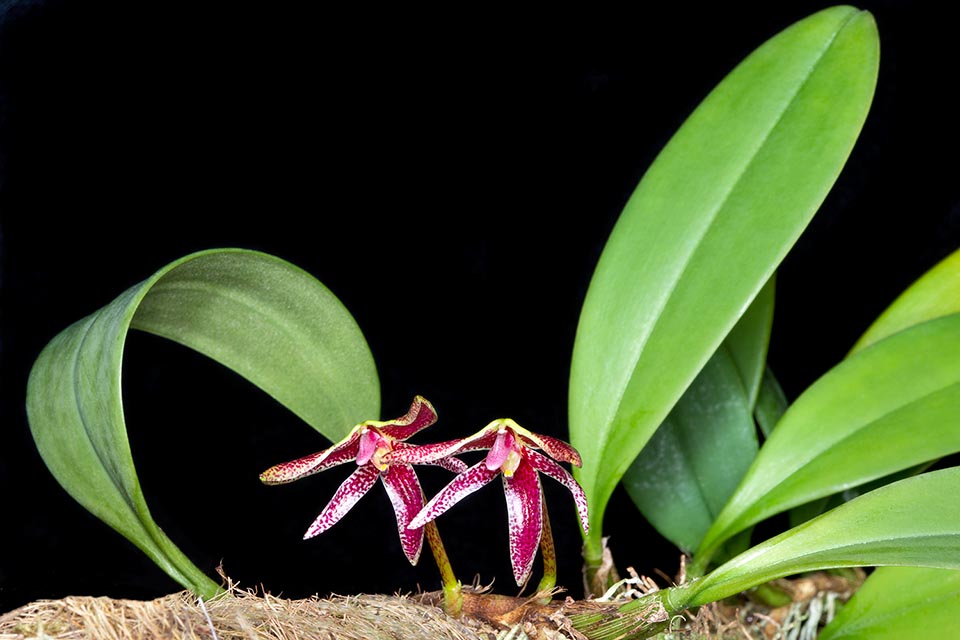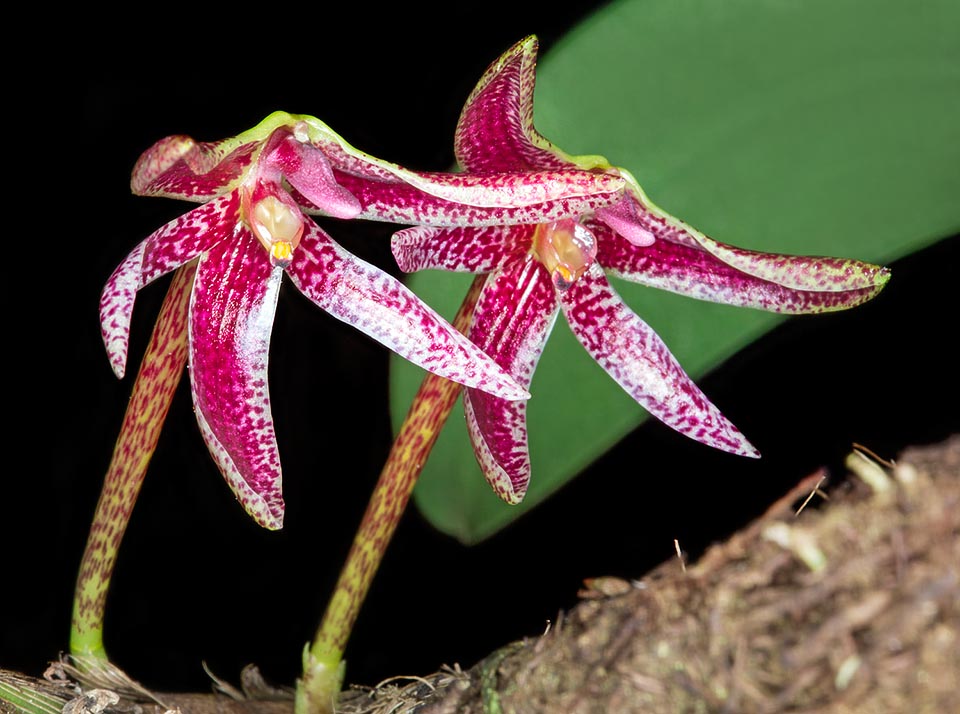Family : Orchidaceae

Text © Pietro Puccio

English translation by Mario Beltramini
The species is native to Borneo, Myanmar, Peninsular Malaysia, Sumatra, Thailand and Vietnam where it grows in the swampy forests at low altitudes.
The name of the genus is the combination of the Greek substantives “βολβός” (bolbos) = bulb and “φύλλον” (phyllon) = leaf, with reference to the leaves growing at the apex of the pseudobulbs; the name of the species is the Latin adjective “patens, entis” = open, extended with reference to the lateral sepals.
Common names: anggrek darah (Indonesian); singto k̂āmpū dæng (Thai).
The Bulbophyllum patens King ex Hook.f. (1890) is an epiphytic species with ellipsoid pseudobulbs, 1,5-3,5 cm long and of 1-2 cm of diameter, arranged at a distance of 2-8 cm on a robust rhizome rooting at the nodes. The pseudobulbs are provided at the apex, on a 1-2 cm long petiole, of only one oblong-elliptic leaf with acute apex, 10-16 cm long and 4,5-6 cm broad, fleshy, of pale green colour.

Epiphyte of the swampy forests of South-East Asia, the Bulbophyllum patens has ellipsoidal pseudobulbs with only one leaf carried by a strong rhizome rooting at nodes © Giuseppe Mazza
Linear-lanceolate dorsal sepal, curved, 2-2,5 cm long and 0,6-0,8 cm broad, ovate-lanceolate lateral sepals, slightly falcate, stretched, 2-2,5 cm long and about 1 cm broad, linear-lanceolate petals with acute apex, 2 cm long and about 0,5 cm broad, oblong-linear labellum, straight, fleshy, mobile, about 0,5 cm long and 0,3 cm broad, and column about 0,5 cm long.
The relatively short lasting flowers, 5-7 days, emit a light pleasant fragrance and are pollinated by the males of various species of fruit fly, in particular of the genus Bactrocera Macquart, 1835. When the insect, attracted by the smell (the main aromatic compound responsible is the zingerone), lands on the labellum causes with the weight its sudden lowering towards the column, being trapped, during the succesive movements for getting free, it takes off the pollinia it will deposit on the stigma of the next flower it will visit.
It reproduces by seed, in vitro, but usually by division, with each section provided of at least 4-5 pseudobulbs.

The flowers emit a nice fragrance that attracts the males of various fruit flies, trapped and obliged to collect the pollinia © Giuseppe Mazza
It can be mounted on trunks or rafts sufficiently ample to allow its vigourous development, with some sphagnum at the base, or placed in pots or baskets rather low and wide with particularly aerated and draining substratum formed by medium sized bark fragments, vegetal charcoal and sphagnum. Repottings and possible divisions are to be done by the vegetative regrowth.
The species is reported in the appendix II of CITES (species whose trade is internationally ruled).
Synonyms: Phyllorchis patens (King) Kuntze (1891); Phyllorkis patens (King ex Hook.f.) Kuntze (1891).
→ For general notions about ORCHIDACEAE please click here.
